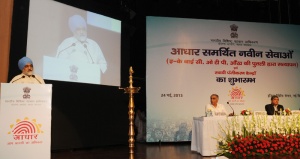Biometric attendance system is quite common in the private sector; however, it is not a familiar process in the public sector.
To demonstrate the efficiency of Aadhaar authentication, Planning Commission of India, has installed an Aadhaar based attendance system in its offices. Like all new things, this novel step had a many perplexed employee.
In Planning Commission’s office at Sansad Marg, the employee feeds in his or her employee code and Aadhaar number while registering. Once that is done, the finger print is more than enough for making biometric attendance.
The initial estimates show that the cost of the Aadhaar based biometric attendance is less than ten percent of a normal biometric attendance system.
Remote authentication is also possible in the Aadhaar based biometric attendance system. This is very useful where there are field officers.
As UIDAI has standardized Aadhaar formats, a low cost Aadhaar based attendance system can be installed in offices having a small number of employees.
The true success will be when other Government offices also adopt the Aadhaar authentication tool.
Will employees resist Aadhaar based biometric attendance?
Related articles
- Minister to call officers’ meeting on Aadhaar (thehindu.com)
- The United States Is Finally Learning From The Rest Of The World (biometricblog.net)
- UPA plays up Aadhaar, DBT, welfare legislations as key achievements (thehindu.com)
- The actual UIDAI-Aadhaar number is 11 digits long and not 12 digits!!! (simplybanking.wordpress.com)
